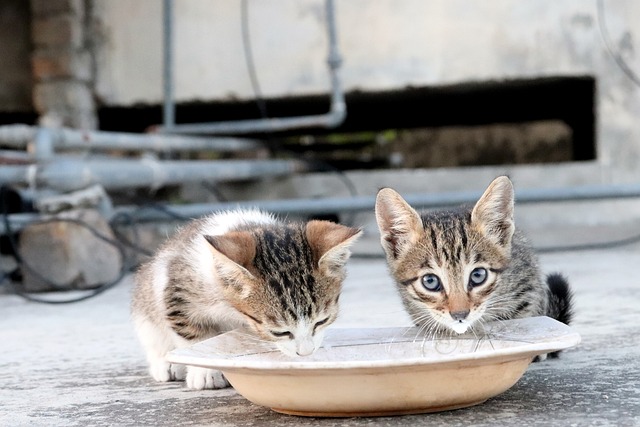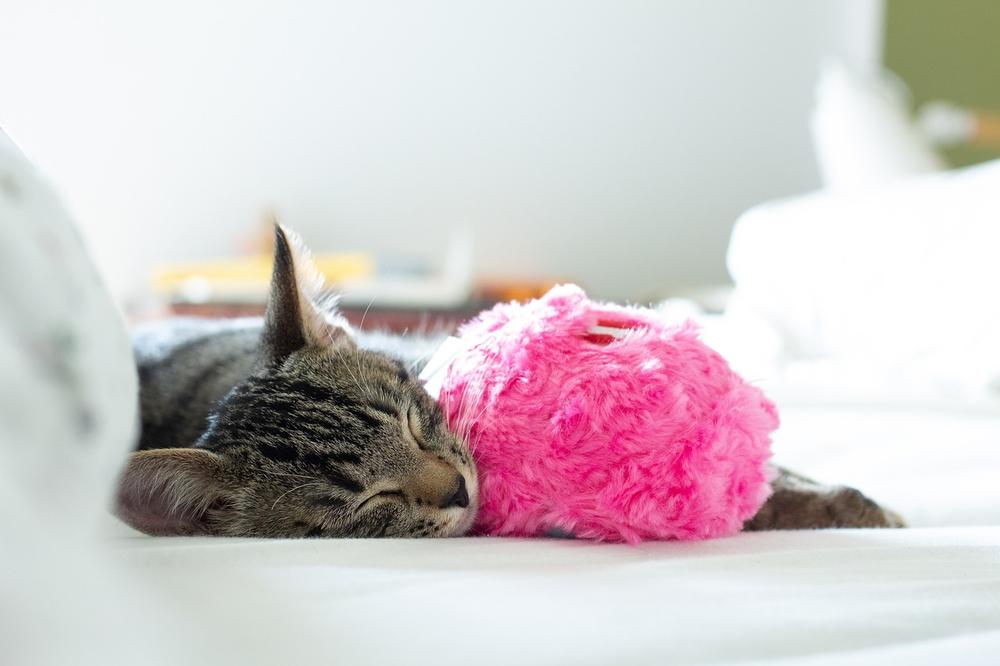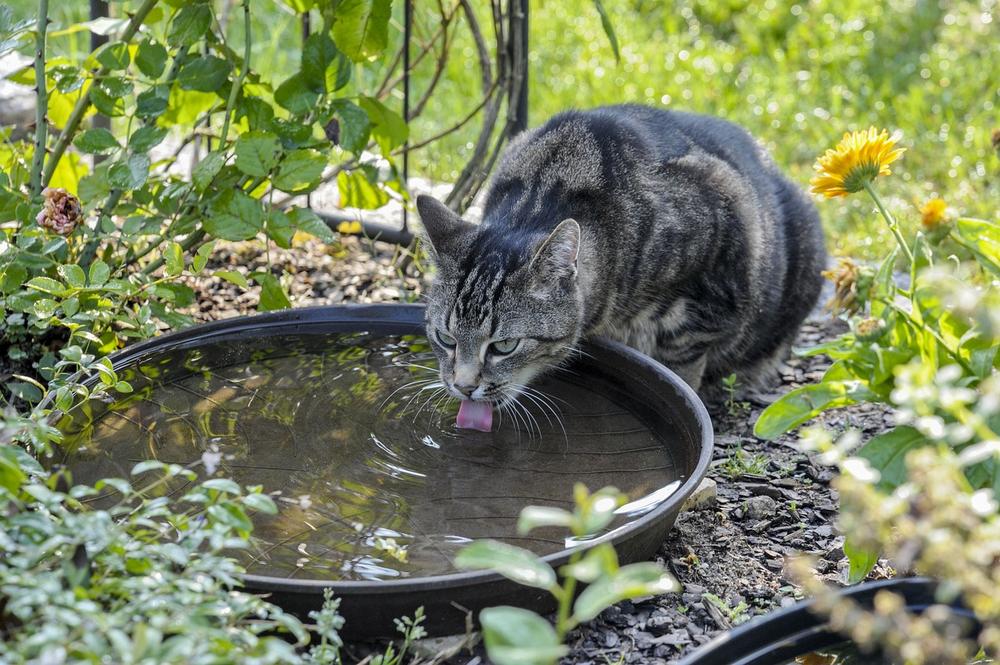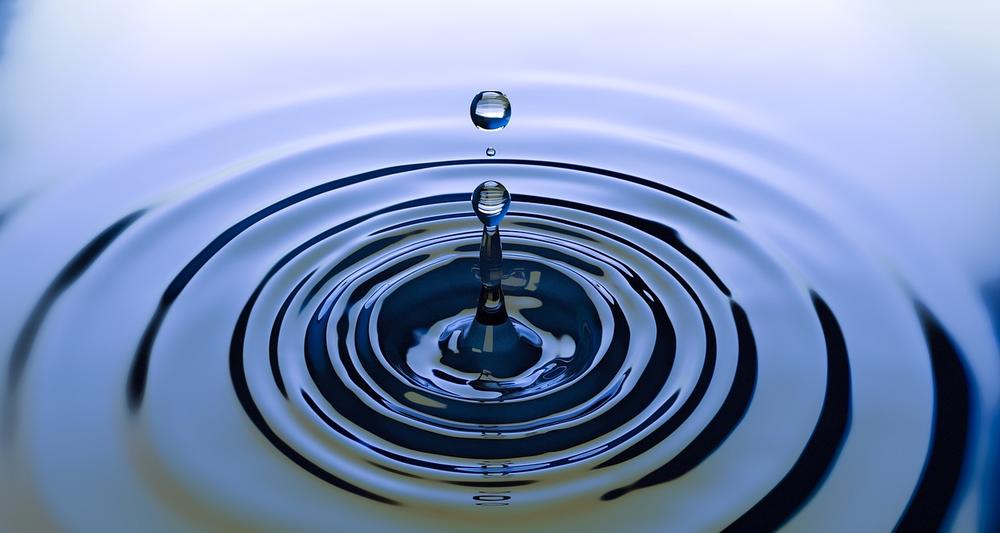How to Teach a Kitten to Drink From a Bowl (EASY STEPS)

So you've got a determined little furball and you're dead set on making sure they stay hydrated and healthy.
I understand, because who doesn't want their pawed pal feeling their best? 😺
But let's be real here, teaching a kitten to drink from a bowl can be more frustrating than trying to wrangle a unicorn.
You might feel like you're speaking a language they just don't get, or that you're on a never-ending loop of spilled water.
Sound familiar?
Well, fear not my friend, because today's guide is here to save the day.
I'm going to give you all the tricks and tips you need to turn that cute chaos into a hydrated triumph.
Ready to dive in?
Let's go!
Encouraging Kittens to Drink More Water: Bowl Training and Tap Water

Here's how you can get your kitten to drink more water, in 10 easy steps:
- Introduce the bowl slowly, don't rush it.
- Use treats or toys to make the bowl a positive thing for them.
- Start training them with a bowl when they're about 4 to 6 weeks old.
- Fill the bowl up with water, of course!
- Let them get used to the temperature of the water little by little.
- You can even splash a bit of water on their fur and paws to familiarize them with it.
- When they do something good, like approaching the bowl, reward them with treats or playtime.
- Put the kitten next to the bowl so they'll be encouraged to take a sip.
- Keep the bowl clean and change the water regularly—it's important!
- Consider using metal, ceramic, or glass bowls—they're preferred materials.
And here are some bonus tips...
- Make sure the bowl is shallow and wide, so their whiskers won't touch the sides—you know how they hate that! 😺
- Stick to one bowl and put it where it's easy for your kitten to reach—one convenient spot will do.
- Tap water should be safe, but if you prefer, you can use filtered or bottled options.
- Always keep the bowl full and add some flavor enhancers like tuna juice or chicken broth—yum!
- When transitioning from bottle to bowl, gradually mix in kitten milk replacer with solid food over a few weeks.
Now go ahead and give these steps a try, your kitten will thank you!
Main points I'll expand upon further down this article:
- Choose a comfortable bowl for your kitten to drink from. Avoid deep or narrow bowls that can irritate their whiskers.
- Experiment with different bowl types and consider using bottled or filtered water.
- Cats prefer cold water, so keep their bowl filled with fresh, cool water.
- Help your kitten locate the water by using a shallow bowl or turning the bowl around.
- Use treats to encourage your kitten to approach and drink from the bowl.
- Transition kittens from milk replacer to water gradually by allowing them to lick liquid off your finger.
- Consider getting a water fountain designed for cats to keep them hydrated.
- Monitor multiple cats to ensure they all have access to the water bowl.
- Use larger bowls with a rubber base or a cat drinking fountain for kittens prone to tipping over bowls.
- Provide fresh water at night for kittens under 4 weeks old to prevent dehydration. Monitor their drinking habits throughout the day.
And now, let me share some additional tips and techniques to help you successfully teach your kitten to drink from a bowl!
Troubleshooting Common Problems When Teaching a Kitten to Drink From a Bowl
Teaching a kitten to drink from a bowl can sometimes be tricky.
So here's what you can do:
- Make the water easy to find: Get a bowl with stripes or contrasting colors, so your kitten can spot the water easily.
- Pick the right bowl shape: Go for a bowl that is comfy and doesn't bother their sensitive whiskers. Not too deep, not too narrow.
- Try different bowls: Cats may have their preferences when it comes to bowl materials or designs. So test out various options to see what your kitten likes.
- Consider water temperature: Cold water usually tickles a cat's fancy. If necessary, use bottled or filtered water for that extra chill.
- Address fears and blind spots: Kittens might fear the bowl or struggle to spot the water due to their blind spot. To help them out, offer treats near the bowl or turn it around a bit.
- Transitioning to a bowl from milk replacer: Start by allowing kittens to lick the liquid off your fingertip. Then, slowly introduce them to milk replacer in a dish over a few weeks.
Just follow these tips, and soon enough, your little furball will be a bowl-drinking expert.
You got this!
Benefits of Water Fountain for Kittens
Encourage your kitty to drink more water with a water fountain
Hey there cat lovers!
Ever noticed how some kittens, like me, can be a bit choosy about their drinking water?
We little ones prefer running water over the still or old stuff.
That's where a cat water fountain comes in, and it's a game-changer for us.
The charm of flowing water for kitties
You see, us felines are naturally drawn to running water because it mimics what we'd find in the wild. It taps into our instinctual craving for fresh and safe hydration.
So having a water fountain designed just for us is an excellent way to keep us hydrated and healthy.
Keep your kitty engaged and curious
One fantastic advantage of a water fountain is that it catches our attention and encourages us to drink more water.
As cute as we may be, getting us to drink enough water can sometimes be a challenge.
But let me tell you, the trickling sounds and mesmerizing motion of flowing water can keep even the most easily distracted kitty focused and intrigued.
So my friends, investing in a water fountain made for cats is definitely a smart move if you want to keep your precious furry friend hydrated and psyched. Because who doesn't want a happy kitty?
And trust me, a happy kitty means one thrilled fur parent too.
And now, let me share with you some effective methods to ensure your kitten stays hydrated and learns to drink from a bowl!
Alternative Methods for Ensuring Your Kitten Stays Hydrated
To ensure your kitten stays hydrated, here are 13 alternative methods you can try:
- Offer supervised access to a slow-dripping faucet.
- Provide a safe area where your kitten can easily drink from the running water.
- Consider using a circulating water fountain designed for cats.
- Monitor for any bullying behaviors that may prevent other cats from accessing the water bowl.
- Use larger bowls with a rubber base or a cat drinking fountain for kittens prone to tipping bowls over.
- Leave out water at night to prevent dehydration in young kittens.
- Throughout the day, offer plenty of fresh water and monitor their drinking habits.
- If your kitten only takes a small amount from the bowl, consider offering milk replacer in a bottle or allowing her access to her mom.
- After each feeding, wipe your kitten with a damp washcloth.
- Once your kitten starts lapping enough liquids, introduce solid foods by mixing either hard or canned kitten food with kitten milk replacer.
- Transition your kitten to eating solid food exclusively between 8 to 10 weeks of age.
- Ensure the water bowl is cleaned regularly to maintain freshness.
- Keep an eye on your kitten's overall health and hydration levels.
Assisting your kitten in remaining well-hydrated and maintaining good health can be achieved through the adoption of these tactics.

And if you're as patient and determined as my little kittens when it comes to improving their overall well-being, I highly recommend checking out How to Train a Stray Cat to Use a Litter Box.
Trust me, you won't be disappointed.
Let's dive right into this essential guide!
Why Hydration Is Important for Your Kitten
Healthy digestion, preventing constipation, and optimal urinary health in kittens all depend on adequate hydration.

Water is crucial for your kitten's digestive process, waste elimination, and maintaining a healthy urinary system.
To ensure your kitten stays healthy, make sure they have access to plenty of water at all times.
Their all in all well-being heavily relies on proper hydration.
And that wraps up today's article.
If you wish to read more of my useful articles, I recommend you check out some of these: Cat Peeing in Water and Food Bowl, Why Do Cats Like Christmas Trees, Cat Sleeping Next to a Litter Box, How Do Cats Clean Themselves After Pooping, and Cat Peeing in Plants
Talk soon,
-Sarah Davis